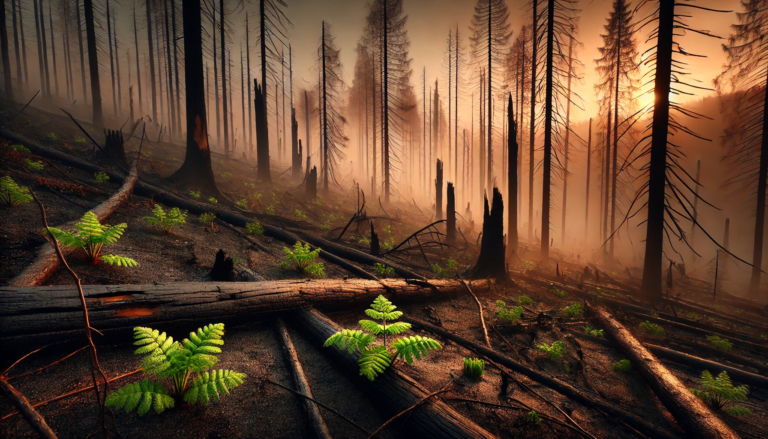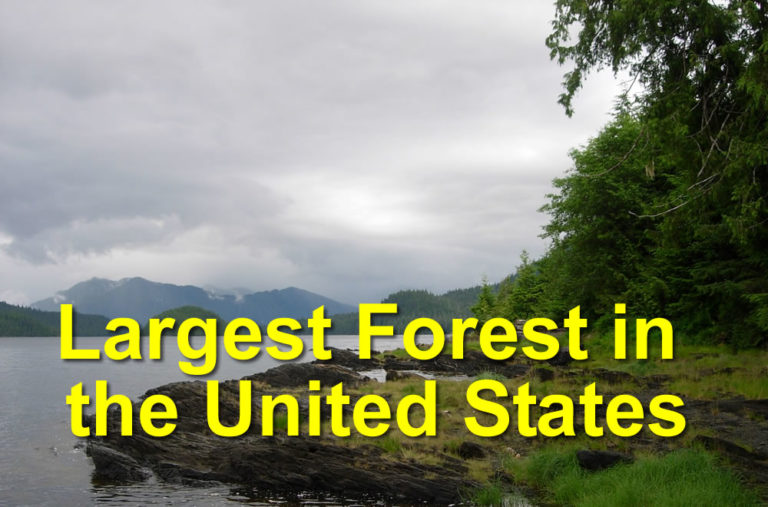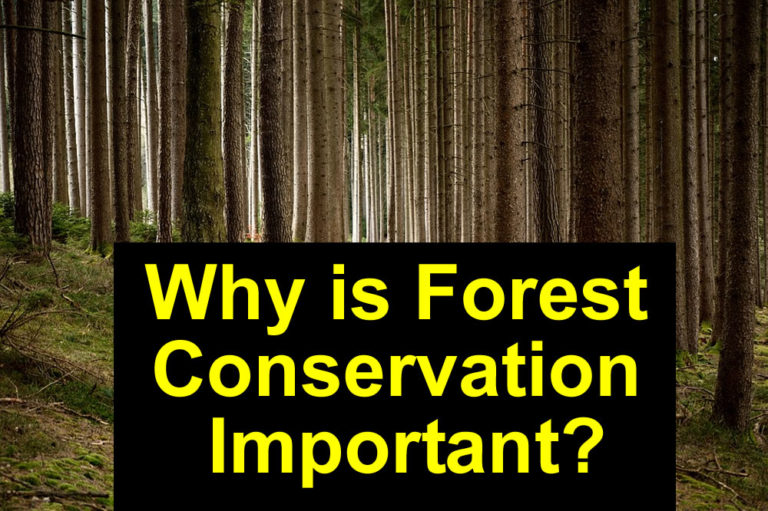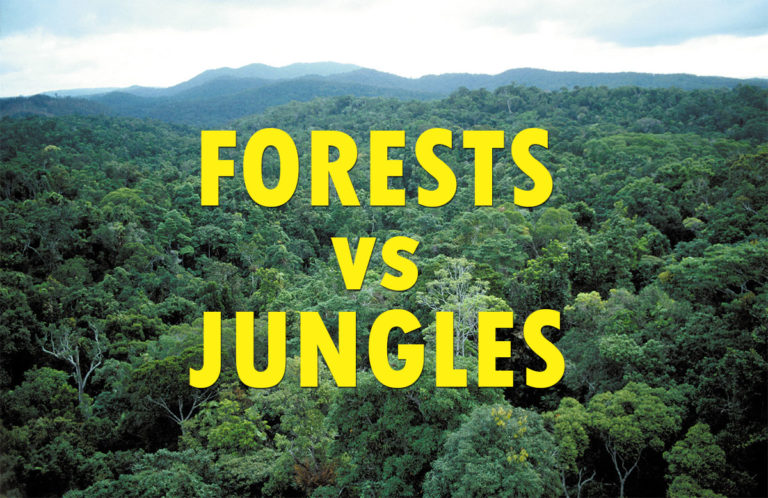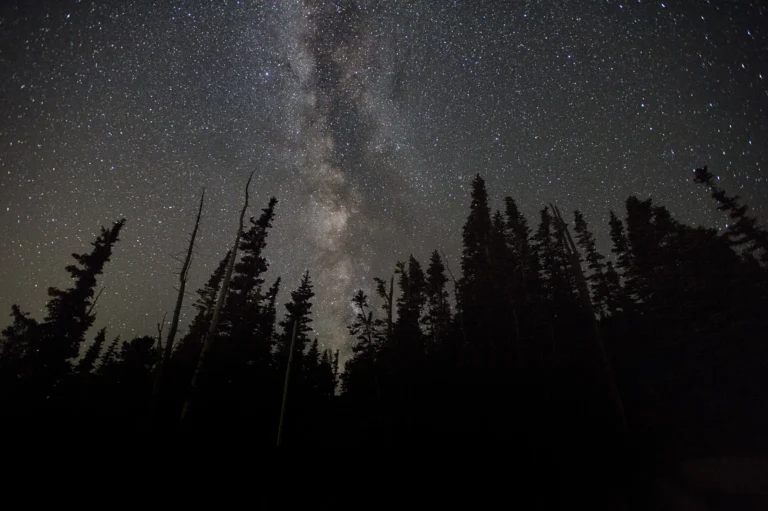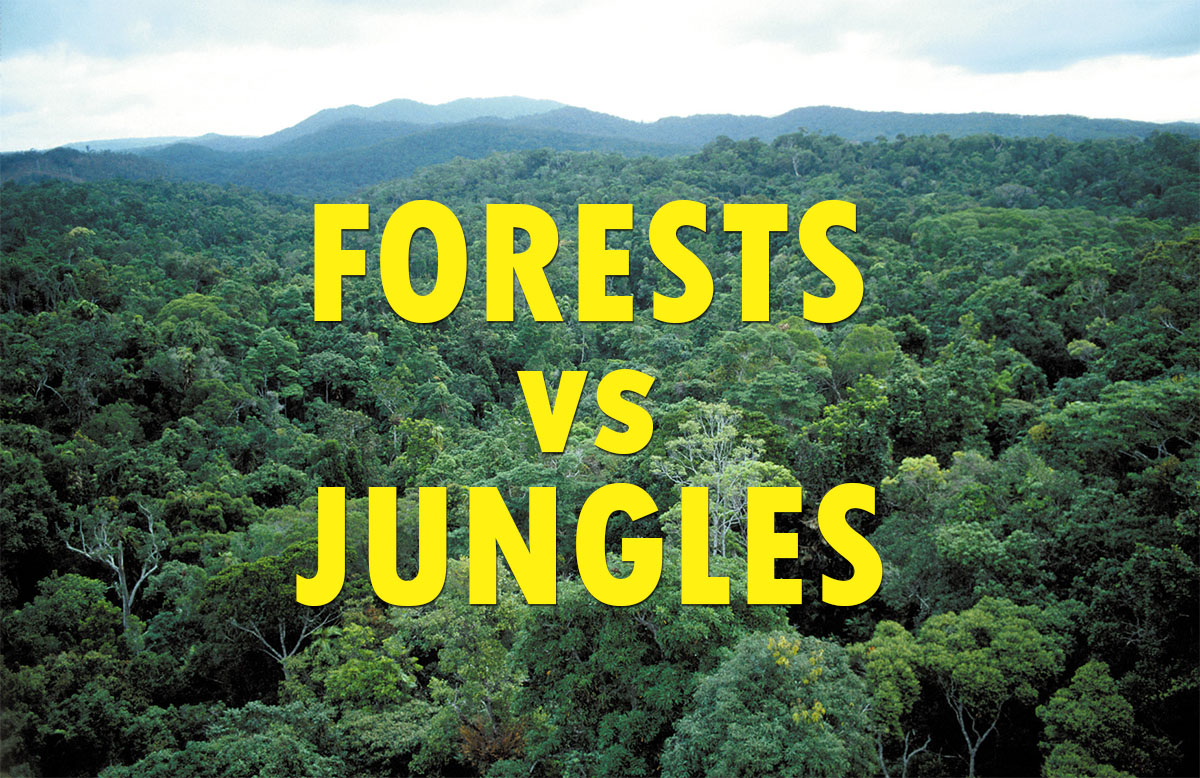
Standing beneath tall trees with sunlight filtering through layers of green, you might wonder if you are in a jungle or a forest. Many people use these terms interchangeably, but understanding the difference between a jungle and a forest offers interesting insights into how our planet’s ecosystems function. This article clarifies the confusion and examines what really sets these green landscapes apart, from the Amazon rainforest to temperate forests around the world. Whether you are planning an adventure or just curious about nature, you’ll learn why these distinctions are important for conservation, ecology, and your next rainforest experience.
What Exactly Is a Forest?
A forest is a piece of land mainly covered by trees and other woody plants. The Oxford English Dictionary describes a forest as dense woodland, but this definition doesn’t capture all the details. Forests grow in different climates on every continent except Antarctica. They range from boreal forests near the Arctic Circle to tropical forests near the equator.
Forests have mature trees with well-developed canopies. The tree canopy forms the upper layer, where branches and leaves create a roof-like structure. This canopy controls how much sunlight reaches the forest floor below. In most forests, the understory, or the layer between the canopy and the ground, is relatively open and easy to walk through.
There are different types of forests based on climate and location. Temperate forests appear in areas with four distinct seasons. These include deciduous forests, where trees lose their leaves every year. Boreal forests, also called taiga, are common in cold northern climates. Tropical forests flourish in warm, humid regions near the equator.
The system used to classify forests looks at factors like canopy coverage and tree density. According to the national vegetation classification system used by ecologists, forests usually have 60 to 100 percent canopy coverage. This means that when you look up in a forest, most of the sky is covered by branches and leaves.
What Defines a Jungle?
A jungle is a dense forest filled with thick vegetation, tangled vines, and heavy undergrowth. The word “jungle” comes from the Sanskrit term “jangala,” which means rough, wild terrain. Unlike regular forests, jungles have a lot of plant growth at ground level. This makes them dense and often hard to navigate.
Jungles form when more sunlight reaches the forest floor. This usually happens at the edges of rainforests, along riverbanks, or in places where the canopy has opened up due to natural events. More sunlight allows smaller plants, vines, shrubs, and young jungle trees to grow well. This thick undergrowth creates the typical tangle that jungles are known for.
The Amazon jungle is a great example of this kind of ecosystem. Here, thick plants grow in layers from the ground to the canopy. Many types of plants and animals thrive in this dense setting. Species like monkeys, reptiles, and numerous insects move through the thick plant life. Every jungle is a forest, but not every forest is a jungle. This important distinction highlights the relationship between these ecosystems.
Jungles usually appear in tropical areas where high rainfall and warm temperatures create perfect conditions. The combination of warmth, moisture, and sunlight fuels rapid plant growth. This leads to what many think of as the ideal “jungle,” a place where plants can overgrow paths in just a few days and nature feels wonderfully untamed.
How Do Rainforests Fit Into This Picture?
Understanding jungle vs rainforest requires examining another crucial ecosystem type. A rainforest is a type of rainforest characterized by exceptionally high rainfall—typically receiving 80 to 400 inches annually. The tropical rainforest represents one of Earth’s most biodiverse biomes.
Rainforests feature distinct layers: the emergent layer with towering trees reaching above the main canopy, the canopy itself, the understory, and the forest floor. This stratified structure creates multiple habitats. The dense canopy blocks sunlight from reaching lower levels, which prevents the thick undergrowth characteristic of jungles from developing throughout the forest.
The Amazon rainforest in South America stands as the world’s largest rainforest. It spans nine countries and contains an estimated 10% of all species on Earth. Other notable rainforests include the Congo Basin in Africa and temperate rainforests in the Pacific Northwest. Even a cloud forest, found at higher elevations, qualifies as a rainforest type when it receives sufficient moisture.
Rain forests receive high rainfall year-round. This consistent moisture, combined with warm temperatures, supports incredible biodiversity. The rainforest ecosystem hosts countless plant and animal species, many found nowhere else. Understanding what’s the difference between rainforests and other forest types helps explain why these areas require special conservation attention.
A rainforest and a jungle can overlap. Jungle conditions often develop where the rainforest canopy opens—creating gaps that allow sunlight to penetrate. These gaps might occur along rivers, at forest edges, or where trees have fallen. Here, the rainforest temporarily becomes more jungle-like with dense, tangled plant life at ground level.
Woods and Forests: What’s the Size Difference?
Before diving deeper into the difference between jungles and rainforests, let’s clarify another common question: what distinguishes woods and forests? This distinction primarily involves size and canopy density rather than fundamental ecological differences.
Woods typically describe smaller forested areas. They’re more intimate landscapes—places you can walk through in an afternoon. Woods usually have 25 to 60 percent canopy coverage, meaning more sky remains visible overhead. The lower tree density in woods creates a more open feel compared to forests.
Forests encompass larger land covered by trees. They represent substantial ecosystems that can span thousands of square miles. The higher canopy density in forests—60 to 100 percent coverage—creates darker understories where less sunlight filters through. This affects which plants can survive at ground level.
Historically, the terms carried additional meanings. In medieval Europe, “forest” designated land reserved for hunting by nobility, regardless of whether trees actually grew there. Today, we use woods and forests based on size and density rather than legal designations.
The Key Differences Between Jungle vs Forest
Let’s break down the main differences that separate these ecosystems. Understanding these distinctions clarifies why jungle and forest aren’t simply interchangeable terms.
Canopy Structure: Forests maintain closed canopies that limit sunlight penetration. The tree canopy forms a continuous layer overhead. Jungles, conversely, have broken or lower canopies allowing abundant light to reach the ground. This fundamental difference drives most other distinctions.
Undergrowth Density: Forest floors remain relatively clear. You can walk through most forests without machetes or extensive trail clearing. Jungles feature dense undergrowth—a tangle of vines, shrubs, saplings, and herbaceous plants. This dense vegetation makes jungles famously difficult to navigate.
Light Availability: Forests restrict the sunlight from reaching lower levels. This creates darker understories where only shade-tolerant species thrive. Jungles bathe in light at all levels, promoting rapid, competitive plant growth from ground to canopy.
Biodiversity Patterns: While both support rich flora and fauna, they host different species. Forest animals often inhabit the canopy or understory. Jungle animals exploit the dense ground-level vegetation. Many species thrive specifically in jungle conditions that wouldn’t survive in standard forest environments.
Geographic Distribution: Forests grow across temperate and tropical zones worldwide. Jungles primarily appear in tropical regions where warmth and rainfall support year-round growth. You’ll find jungles in South America, Southeast Asia, and Central Africa—always in warm, moist climates.
Human Access: Forests typically offer easier access. Established trails remain passable with minimal maintenance. Jungles require constant clearing. The rapid plant growth means paths disappear within weeks without maintenance, making jungle exploration more challenging.
Types of Forests Around the World
Forests demonstrate remarkable diversity across our planet. Each forest type reflects its climate, latitude, and local conditions. Let’s explore the major categories.
Tropical Forests: These forests grow near the equator in consistently warm, wet conditions. The tropical rainforest location spans Central and South America, Central Africa, and Southeast Asia. These forests contain the highest biodiversity of any land-based ecosystem. Countless plant and animal species call tropical forests home.
Temperate Forests: Found between the tropic and polar regions, temperate forests experience seasonal changes. Deciduous forests dominate temperate zones where trees shed leaves in autumn. These forests and temperate forests create spectacular seasonal displays. Deciduous forests include the forests of eastern North America, Europe, and East Asia.
Boreal Forests: Also called taiga, the boreal forest stretches across northern latitudes in Canada, Scandinavia, and Russia. These forests endure long, cold winters. Coniferous trees like spruce and pine dominate. The boreal forest represents Earth’s largest terrestrial biome.
Montane Forests: Growing at high elevations, these forests cope with cooler temperatures and specific moisture patterns. Cloud forests represent one montane forest type, existing where persistent fog provides additional moisture beyond regular rainfall.
Each forest type supports distinct communities of flora and fauna. The animals like bears, deer, and wolves in temperate forests differ entirely from species found near the equator. This diversity makes forests crucial for global biodiversity.
Where Jungles Appear in the World
Jungles don’t exist as a formal biome classification. Instead, jungle is a term describing dense tropical vegetation conditions. These conditions emerge in specific situations within tropical regions.
Rainforest Edges: Where rainforests meet rivers, clearings, or other ecosystems, jungle conditions develop. The opening in the canopy allows sunlight to fuel dense ground-level growth. These transition zones create some of the most biologically productive areas.
Secondary Growth Areas: After deforestation or natural disturbances, fast-growing plants colonize cleared areas. This secondary growth creates temporary jungle conditions as vegetation races to occupy space. Over time, if left undisturbed, these areas may mature into proper forest structure.
River Corridors: Along tropical rivers, the Amazon jungle demonstrates classic jungle characteristics. Sunlight streaming down the river creates a corridor of light, triggering explosive vegetation growth along the banks. These riparian jungles teem with life.
Lowland Tropics: Jungle conditions commonly appear in hot, wet lowland areas found in the tropics. Southeast Asian jungles, African jungle regions, and Central American zones all exhibit similar characteristics—dense, nearly impenetrable vegetation wherever light reaches the ground.
Understanding where jungles appear helps explain why every forest is a jungle remains untrue. Jungles require specific conditions: tropical location, abundant rainfall, and crucially, sufficient sunlight reaching ground level to sustain thick vegetation.
The Ecological Importance of These Ecosystems
Both forests and jungles provide critical ecological services. Understanding their importance helps explain why conservation matters so deeply.
Carbon Storage: Forests contain massive amounts of carbon in their trees, soil, and vegetation. The Amazon rainforest alone stores approximately 150-200 billion tons of carbon. This makes forests crucial for mitigating climate change. Deforestation releases this stored carbon, contributing to global warming.
Biodiversity Havens: Rainforest ecosystems support extraordinary numbers of plant and animal species. A single hectare of tropical forest might contain hundreds of tree species and thousands of insect species. Many species exist nowhere else. Losing these forests means extinction for countless organisms.
Water Cycle Regulation: Forests influence local and global rainfall patterns. Trees absorb water through roots and release it through leaves—a process called transpiration. The rainforest ecosystem generates much of its own rainfall through this process. Forests grow and sustain themselves through these water cycles.
Soil Protection: Tree roots stabilize soil, preventing erosion. The forest canopy shields soil from heavy tropical downpours. Without forest cover, tropical soils wash away quickly, damaging rivers and reducing agricultural potential downstream.
Climate Regulation: Beyond carbon storage, forests moderate temperatures. The vegetation cools the air through evapotranspiration. This affects regional weather patterns and makes forests natural air conditioners for the planet.
Plant Life: Comparing Flora in Different Forest Types
The plant life varies dramatically between forest types. These differences reflect each ecosystem’s unique conditions.
In temperate forests, deciduous trees dominate. Species like oak, maple, and beech create forests with distinct seasonal rhythms. The forest floor in temperate forests often features spring wildflowers that bloom before trees leaf out and shade the ground.
Temperate rainforests, like those in the Pacific Northwest, support massive conifers. These forests receive abundant rainfall but experience cool temperatures. Mosses, ferns, and lichens festoon every surface, creating a lush green landscape even in winter.
Tropical rainforests showcase staggering plant diversity. The canopy contains tall trees reaching 150 feet or more. Epiphytes—plants growing on other plants—cover branches. Lianas wind through the canopy. The rainforest experience includes encountering plants at every level, from ground-dwelling herbs to sky-high canopy dwellers.
Jungle areas within these forests feature even denser plant growth. Here, vines create a tangle that connects ground to canopy. Fast-growing pioneer species compete aggressively for space. Bamboo, palms, and countless flowering plants create an almost impenetrable green wall.
A jungle is a dense environment where competition for sunlight drives plant strategy. Plants must either grow rapidly to reach light or tolerate deep shade until an opening appears. This creates dynamic, ever-changing vegetation patterns.
Animal Life: Fauna Across Forest Types
The fauna inhabiting forests varies as dramatically as plant communities. Each forest type supports animals adapted to its specific conditions.
Temperate deciduous forests host animals like white-tailed deer, black bears, raccoons, and numerous bird species. These animals cope with seasonal changes—some hibernate, others migrate, and many store food for winter. The relatively open forest floor allows larger mammals to move freely.
Boreal forest fauna includes moose, caribou, wolves, and lynx. These species endure harsh winters with specialized adaptations. The boreal forest’s relative simplicity—fewer tree species than tropical forests—supports smaller overall biodiversity but features iconic cold-adapted animals.
Tropical rainforests contain incredible fauna diversity. The stratified forest structure creates multiple habitats. Canopy-dwelling species like monkeys, sloths, and birds rarely descend to ground level. Mid-level creatures occupy the understory. Ground-dwellers include tapirs, peccaries, and reptiles.
Jungle areas attract different species. The dense vegetation provides cover for smaller animals. Reptiles like snakes and lizards thrive in the warm, humid conditions. Insects reach their greatest diversity in jungles. A single tree might host hundreds of insect species, from ants to butterflies.
Many species have adapted specifically to jungle conditions. They navigate the dense undergrowth efficiently and exploit the abundant food resources found at ground level. Understanding these adaptations reveals how animals like jaguars hunt in such challenging terrain.
Climate and Rainfall: What Drives These Ecosystems
Climate fundamentally shapes whether an area develops into forest, jungle, or remains unforested. Temperature and rainfall patterns determine what grows where.
Tropical forests require consistent warmth and high rainfall. The tropical rainforest location near the equator experiences minimal temperature variation—hot and humid year-round. Rainforests receive high rainfall distributed throughout the year or concentrated in wet seasons. This moisture supports the explosive plant growth characteristic of tropical regions.
Temperate forests experience distinct seasons. Temperature ranges from hot summers to cold winters. Rainfall varies but generally occurs year-round. Deciduous forests evolved leaf-shedding as an adaptation to winter cold—maintaining leaves during freezing would damage or kill trees.
The amount of sunlight reaching different latitudes also matters. Tropical regions receive intense, direct sunlight year-round. This drives photosynthesis and plant growth. Temperate zones experience varying daylight hours and solar intensity across seasons.
Jungle development requires the right combination: tropical warmth, abundant moisture, and crucially, gaps in the canopy. Where these factors align, vegetation overgrows rapidly. Without high rainfall, even tropical areas develop savannas or scrublands rather than jungles.
Understanding these climate drivers explains the differences between the three major forest types and why jungles appear only in specific tropical conditions.
Conservation Challenges: Protecting Forests and Jungles
Both forests and jungles face significant conservation pressures. Deforestation threatens these ecosystems globally, with consequences extending far beyond the immediate area.
The Amazon rainforest has lost approximately 17% of its original extent. Agricultural expansion, logging, and development continue reducing forest area. Each acre lost represents countless species habitats destroyed and carbon released into the atmosphere.
Tropical forests face particular pressure. Their locations often coincide with developing nations where economic pressures drive deforestation. Converting forest to agriculture or pasture provides short-term economic benefits but creates long-term environmental costs.
Temperate forests also suffer, though less dramatically. Sustainable forestry practices have improved in many regions, but old-growth forests—those never logged—remain rare. These ancient forests contain unique biodiversity that managed timber forests cannot replicate.
Conservation efforts take many forms. Protected areas like national parks preserve some forests. Sustainable forestry certifications encourage better practices. Indigenous land rights recognition protects forests where native communities have managed them sustainably for generations.
The differences between jungle vs rainforest matter for conservation. Rainforests require protecting vast intact areas to maintain their structure and species. Secondary growth that creates jungle conditions, while valuable, cannot replace primary rainforest’s ecological functions.
Can You Experience Both? Planning Your Jungle and Rainforest Adventures
Many travelers dream of experiencing these magnificent ecosystems firsthand. Understanding the difference between forest and jungle helps plan more rewarding adventures.
Rainforest experiences often emphasize canopy access. Walkways, towers, and zip lines allow visitors to explore the upper forest layers where most activity occurs. Guided walks reveal the rainforest ecosystem’s complexity—from tiny orchids to giant trees. Night walks showcase nocturnal fauna that remain hidden during daylight.
Jungle conditions create different experiences. Here, the adventure involves navigating dense vegetation, perhaps by river or cleared trail. The thick plant life means less visibility but potentially closer animal encounters. The sense of wildness intensifies in jungle settings.
The Amazon rainforest offers both experiences. Deeper forest areas maintain classic rainforest structure with clear understories. River edges and disturbed areas present true jungle conditions. Many tours combine both, providing comprehensive rainforest and jungle exposure.
Southeast Asian destinations like Borneo offer similar variety. National parks protect primary rainforest while accessible areas demonstrate secondary growth and jungle characteristics. The diversity of landscapes enriches any rainforest experience.
When planning jungle and rainforest adventures, consider:
- Season (dry season often provides easier access)
- Physical fitness requirements (jungle trekking demands more exertion)
- Wildlife viewing goals (different species prefer different habitats)
- Desired experience intensity (from comfortable lodges to camping)
- Conservation credentials of tour operators
Essential Takeaways: Understanding Our Forested World
After exploring these verdant ecosystems, several crucial points deserve emphasis:
Every jungle is a forest but not every forest is a jungle. This fundamental relationship clarifies that jungle describes a forest subtype characterized by dense ground-level vegetation rather than a completely separate ecosystem.
Canopy structure determines undergrowth density. Closed canopies create forests with clear understories. Open or broken canopies allow the thick vegetation that defines jungles. This single factor drives most differences between the two.
Climate and location matter immensely. Tropical regions produce both rainforests and jungles. Temperate zones create deciduous forests and temperate rainforests. Boreal forest dominates cold climates. Each requires specific temperature and rainfall conditions.
Biodiversity peaks in tropical rainforests. While all forests support rich ecosystems, the combination of warmth, moisture, and structural complexity makes tropical rainforests Earth’s most biodiverse terrestrial environments. A jungle is a type of these diverse systems.
Conservation urgency cannot be overstated. Forests store carbon, generate oxygen, stabilize climate, and house countless species. Protecting these ecosystems—whether we call them forests, jungles, or rainforests—ranks among humanity’s most important challenges.
The difference between forest types affects conservation strategies. Primary rainforest requires different protection approaches than secondary growth or jungle areas. Understanding these distinctions helps target conservation resources effectively.
Human impact extends beyond deforestation. Climate change affects rainfall patterns, potentially converting some forests to different types or eliminating them entirely. The interconnected nature of Earth’s systems means forests everywhere face climate-related challenges.
Jungles and rainforests together create the tropics’ ecological mosaic. Rather than competing concepts, they represent different conditions within tropical forest systems. Both contribute to the overall ecosystem functioning.
Personal experience transforms understanding. Reading about the difference between jungles and rainforests provides knowledge, but walking through these ecosystems—feeling the humidity, hearing the calls of unseen animals, witnessing the sheer volume of life—creates appreciation that words cannot capture.
Every forest matters. Whether we discuss the Amazon jungle, temperate forests near your home, or the boreal forest stretching across northern continents, each plays vital roles in Earth’s systems. Recognizing what makes each unique enhances our appreciation for all forested landscapes.
The distinctions between jungle, forest, and rainforest reflect nature’s incredible diversity. From the organized structure of temperate deciduous forests to the explosive growth of tropical jungles, our planet’s forested ecosystems showcase evolution’s creativity in adapting to varied conditions. Understanding these differences enriches our appreciation for Earth’s complexity and strengthens our commitment to protecting these irreplaceable natural treasures for future generations.
